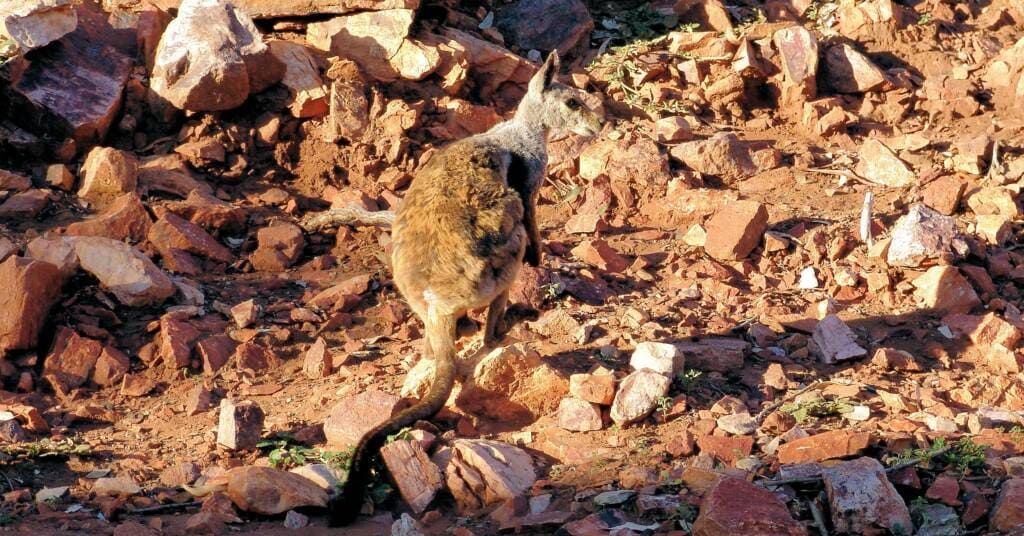Ever dreamt of spotting one of the rarest and most enchanting creatures in the wild? The black-footed rock wallaby, an elusive delight for nature enthusiasts, could fulfill your wildlife watching fantasies. This article will guide you through the essentials of seeking out these splendid marsupials in their natural habitat, ensuring that your adventure is both successful and fulfilling.

The Enigmatic Black-footed Rock Wallaby
The black-footed rock wallaby, known scientifically as Petrogale lateralis, is a marvel of nature, celebrated for its unique appearance and elusive behavior. These animals are relatively small, with grey-brown fur and distinctive black feet, making them incredibly agile climbers. Found primarily in rocky outcrops of Australia, their ability to navigate steep, rugged terrains showcases their amazing adaptability to harsh environments.

Preferred Habitat and Distribution
To have the best chance of spotting a black-footed rock wallaby, you need to understand their preferred habitats. These charming creatures primarily reside in rocky hills and outcrops within arid and semi-arid regions of Australia. Key locations where they can often be observed include:
- The MacDonnell Ranges in Central Australia
- Kimberley region in Western Australia
- Flinders Ranges in South Australia
In these areas, these wallabies are adept at using the rocky terrain for both shelter and as vantage points to spot predators. Thus, thoroughly exploring these landscapes can increase your chances of a sighting.
Seasonal Behavior and Best Times to Spot Them

Understanding the seasonal behavior of black-footed rock wallabies is crucial for timing your visit. These marsupials tend to be more active during twilight hours—dusk and dawn—when they emerge to feed. However, their activity patterns may vary with the season, often influenced by temperature and food availability.
For optimal viewing, consider planning your trip during cooler months when they are more likely to be outside their rocky shelters. Observing them during these times can offer mesmerizing encounters as they forage and interact, providing more than just a fleeting glimpse of this rare species.
Conservation and Protection Efforts
The black-footed rock wallaby is listed as a vulnerable species due to various environmental threats, including habitat destruction, predation by introduced species, and climate change. Numerous conservation programs are in place to help protect these remarkable creatures and their habitat.
Organizations actively involved in their conservation focus on habitat restoration, predator control, and breeding programs to bolster their population. By supporting these initiatives, visitors contribute to the preservation of these unique wallabies, ensuring that future generations can enjoy their beauty.

Responsible Wildlife Viewing Tips
When embarking on your quest to spot black-footed rock wallabies, it’s essential to observe with minimal disturbance to their environment. Here are some tips to consider:
- Maintain a respectful distance and use binoculars for a closer view.
- Avoid feeding or attempting to touch the wallabies.
- Stay on designated trails to prevent habitat damage.
- Use quiet, non-intrusive movements and speak softly to avoid startling them.
By adhering to these guidelines, you not only ensure a more authentic viewing experience but also contribute to the wellbeing of the black-footed rock wallabies and their fragile ecosystems.
Conclusion
Spotting the rare black-footed rock wallaby in its natural habitat offers an extraordinary experience cherished by wildlife enthusiasts and nature lovers alike. By understanding their habitat preferences, observing their seasonal behaviors, and following responsible viewing practices, you can increase your chances of an unforgettable encounter with these enchanting creatures. Furthermore, supporting conservation efforts helps safeguard these wallabies and their habitat for future generations.
FAQs
How can I identify a black-footed rock wallaby?
Look for their distinctive grey-brown fur, black feet, and agile movements on rocky terrains.
Where are black-footed rock wallabies commonly found?
They are primarily found in arid and semi-arid regions of Australia, including the MacDonnell Ranges, Kimberley region, and Flinders Ranges.
What is the best time to see black-footed rock wallabies?
The best times are typically during dawn and dusk, especially during cooler months.
What are the primary threats to black-footed rock wallabies?
Key threats include habitat destruction, predation by introduced species, and climate change.
How can I contribute to the conservation of black-footed rock wallabies?
Support conservation programs focused on habitat restoration, predator control, and captive breeding efforts.


